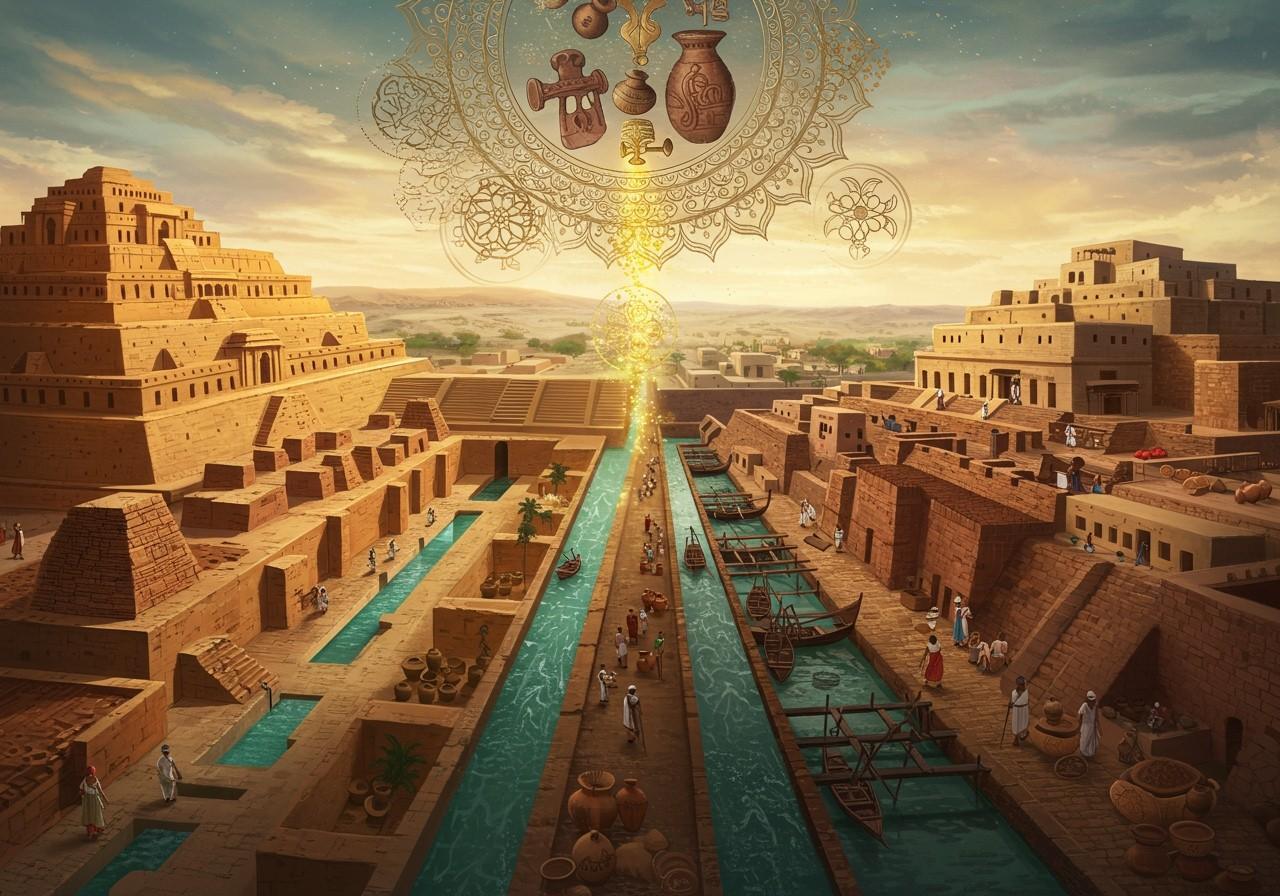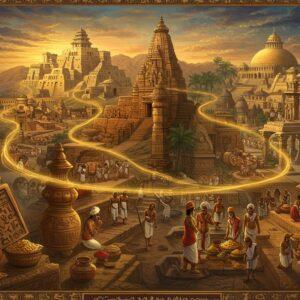
Journey through time and explore the fascinating remnants of two prominent Indus Valley Civilization cities: Dholavira and Lothal. These ancient urban centers offer a glimpse into a sophisticated civilization that thrived thousands of years ago in present-day India.
Overview of the Indus Valley Civilization
The Indus Valley Civilization, flourishing between 3300 and 1300 BCE, stands as a testament to early urban development. Spanning across parts of modern-day India, Pakistan, and Afghanistan, this civilization boasted over 1,000 cities and settlements renowned for their advanced urban planning. Cities like Mohenjo Daro and Harappa showcased remarkable organization and engineering, featuring well-organized wastewater drainage, trash collection, and possibly public granaries and baths. Unlike their Mesopotamian and Egyptian counterparts, Indus Valley cities lacked monumental structures like palaces or temples, focusing instead on efficient urban living as revealed by excavations at Kalibangan.
Dholavira: A City of Water and Stone
Discovered in 1967 by archaeologist Jagat Pati Joshi, Dholavira, located in Gujarat, India, stands as one of the five largest Harappan sites. This ancient city distinguishes itself through:
- Ingenious Water Conservation: Dholavira’s intricate water management system, featuring reservoirs and stepwells, highlights the ingenuity of its inhabitants in adapting to the arid environment. This sophisticated system allowed them to store and distribute water effectively, ensuring the city’s survival.
- Sophisticated Urban Planning: The city’s meticulous layout, divided into a citadel, middle town, and lower town, exemplifies advanced urban planning principles. This structured organization reflects a well-governed society with distinct social hierarchies and designated areas for various activities.
- Extensive Use of Stone: Unlike many other Indus Valley sites, Dholavira utilized stone extensively in its construction, showcasing its unique architectural style. The use of stone contributed to the city’s durability and stands as a testament to its builders’ craftsmanship.
Key excavations have unearthed a large signboard inscribed with Indus script, intricate reservoirs, and an advanced drainage system.
Lothal: A Hub of Maritime Trade
Unearthed in 1954 by archaeologist S.R. Rao, Lothal, situated in Gujarat, India, thrived as a major port city. Its strategic location near the Gulf of Khambhat facilitated trade and contributed to its prosperity. Lothal’s significance lies in its:
- Ancient Dockyard: Lothal’s dockyard, one of the oldest known in the world, stands as a testament to its maritime prowess. This engineering marvel enabled ships to dock and facilitated trade connections with distant regions.
- Warehouses and Trade: The presence of warehouses suggests Lothal’s role as a significant trade hub, storing goods for import and export. This organized storage system facilitated efficient trade operations and contributed to the city’s economic prosperity.
- Bead-Making Industry: Lothal was a center for bead production, demonstrating its craftsmanship and industrial activity. The discovery of bead-making workshops and tools reveals the city’s specialized craft production and its contribution to trade networks.
Comparing Dholavira and Lothal
While both cities belonged to the Indus Valley Civilization, they possessed distinct characteristics:
| Feature | Dholavira | Lothal |
|---|---|---|
| Urban Planning | Distinct citadel, middle town, and lower town; grid-based layout | Compact layout with dockyard, acropolis, and lower town |
| Architecture | Extensive use of stone | Predominantly baked brick construction |
| Economy | Agriculture, craft production, and trade | Maritime trade, bead-making, and commerce |
| Unique Features | Advanced water conservation system, large signboard with Indus script | Dockyard, bead factory |
Preserving Our Heritage
The preservation of Dholavira and Lothal is paramount to understanding our shared human history. These sites offer invaluable insights into the ingenuity, resourcefulness, and societal structures of the Indus Valley Civilization. Protecting these ancient cities ensures that future generations can continue to learn from and appreciate the rich tapestry of our past.
Poojn.in: Connecting You to India’s Cultural Heritage
Just as Dholavira and Lothal stand as testaments to ancient Indian ingenuity, Poojn.in honors this heritage by offering a wide selection of products that connect you to India’s rich cultural traditions. Explore our collection of Radha Krishna Bigraha and Shiva Lingam and Nandi sets, crafted with reverence and respect for ancient artistry.
Poojn.in offers a diverse range of spiritual and cultural products, including traditional prayer mats from various regions of India. Discover the beauty and craftsmanship of Gujarati Gongadi mats, Rajasthani Durries, and West Bengal Khes – each reflecting the unique textile traditions of their respective regions. These mats, much like the ancient cities we’ve explored, serve as a bridge between the past and the present, connecting us to the spiritual practices and artistic traditions of our ancestors.


